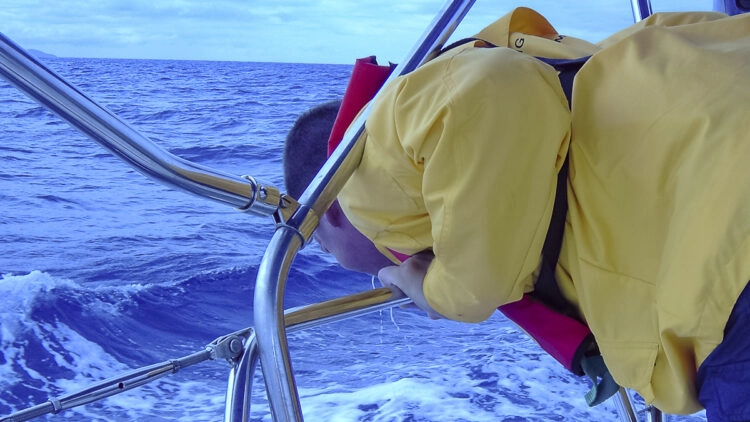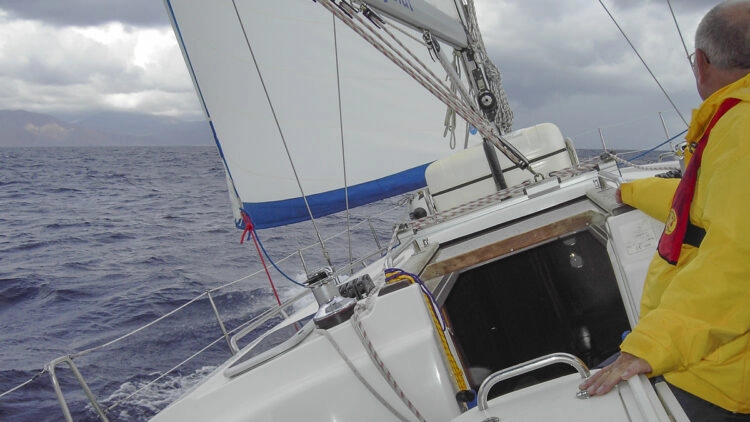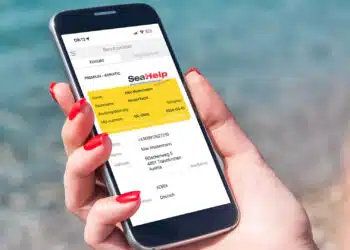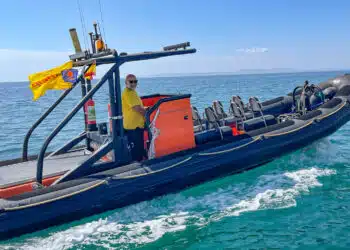Seasickness is a so-called motion sickness, a kinetosis. Therefore, it can also occur in cars, buses or airplanes as motion sickness. It occurs because the brain receives different information from the eyes, the inner ear with the organ of balance, and the muscles about the position, posture, and location of the body in space.
When this information does not match for the brain, the so-called “mismatch” theory occurs. When a sailor sits below deck at the chart table, his eyes, looking at the chart and interior, signal to him that the environment is at rest. But his organ of equilibrium and the muscles compensating for movement send a different information to his brain due to the ship’s movements. The body reacts to these mismatched impressions by releasing stress hormones. One of these is histamine. If large amounts of this hormone circulate through the bloodstream, fatigue, nausea, dizziness and vomiting are the result – seasickness sets in.
Prominent victims of seasickness
The hardly fallible Goethe suffered from nausea on his Italian journey and recommended as a remedy preventive in horizontal position to “red wine and good bread”. So slightly dizzy, the ship’s movements will have lulled him only gently to sleep. And Charles Darwin, evolutionary theorist and natural scientist, often toiled for days in the hull of the HMS Beagle on his five-year voyage around the world. Even the British admiral Lord Horatio Nelson, known for his successful naval battles, was known to suffer from seasickness. And the writer Gorch Fock, whose name still adorns the German Navy’s sail training ship, became so nauseous on board that he broke with family tradition and did not go to sea as a fisherman.
Who gets seasick?
Seasickness can affect anyone, the experienced ocean sailor as well as the charter skipper in the Adriatic. Statistically, women get seasick faster than men and children more often than adults. Also prone to seasickness are migraine sufferers and anyone who suffers from hay fever.
Home remedy for seasickness
Ginger, preferably raw or infused as a tea, is said to have a healing effect. Many also rely on the fresh taste of peppermint – whether as a tea or even as chewing gum. Many sailors take vitamin C in high doses (2x1g/day) as a preventive measure before their trip in order to arm themselves against seasickness. Even before the cruise, acupressure wristbands (e.g., from SeaBand) can also be applied. Their absolutely side-effect-free mode of action is based on Chinese medicine. With the precisely dosed pressure on the accupressure point Nei-Kuan nausea and vomiting are said to be significantly alleviated or even disappear altogether.

Good air for nausea
When the stomach begins to rebel, it is best for the sufferer to go out on deck and try to have a clear view of the horizon. Counterproductive are especially food smells, the smell of ship diesel, a strained look at the paper sea chart on the navigation table or even reading. A comfortable position in the middle of the ship has proven to be particularly effective. The simplest remedy for seasickness is to take the wheel and thus trick the body by concentrating on the helm and simultaneously fixing the horizon. If you are very tired, but you dare to go to the bunk, you should sleep. During sleep, the sense of balance is deactivated, so when sufferers wake up, they often feel better.
Prevent seasickness with a healthy diet
Those who avoid alcohol, cigarettes and coffee on board often feel much better in waves and wind. And if you’re not quite sure whether your bad constitution is related to last night or the rolling ship, it’s better to forgo a counter beer. And reach for water or fruit juice to compensate for the loss of fluids and electrolytes. Excessively fatty food or foods such as salami, ham and smoked fish, which have a high histamine content, also promote seasickness. Better: plenty of fresh fruit and light fare.
How can skippers and crew help with nausea?
First and foremost, with understanding and compassion, even if you’re feeling wonderful yourself. A silly saying about the sick person “going to feed fish” doesn’t always go over well. If a seasick fellow sailor is crouching downwind, make absolutely sure that he is wearing a life jacket and is secured on deck with the lifebelt. Seasick people freeze easily and are grateful if they are provided with a warm jacket or blanket. To calm a nervous stomach, tea, broth and also rusks, salt sticks or dry cookies help. And those who throw up in spite of everything will be more than grateful for a glass of water and toothbrush afterwards.
Medicines against seasickness
Tablets or even suppositories with the active ingredient dimenhydrinate, such as Vomex A. The medications curb spitting up, but often make patients tired. Ideally, the patient can roll into the bunk and fall asleep, exhausted, while the seaworthy crew members sail on. Alternatively, there are chewing gums for motion sickness that either contain antihistamines or also contain high levels of vitamin C to accelerate the breakdown of histamine (e.g., SeaGum). Those who already know they suffer from severe seasickness should consult with their doctor before the cruise and have stronger medication prescribed.
When is the nausea over?
As soon as the ship enters calmer waters, the rolling wave from astern or even the rhythmic dipping of the bow into the waves are over, seasick people regain their spirits. On a longer trip, without mooring in the harbor or at anchor in the evening, a habituation effect occurs after two to three days. Then the “sea legs” have grown and the complaints have disappeared.













